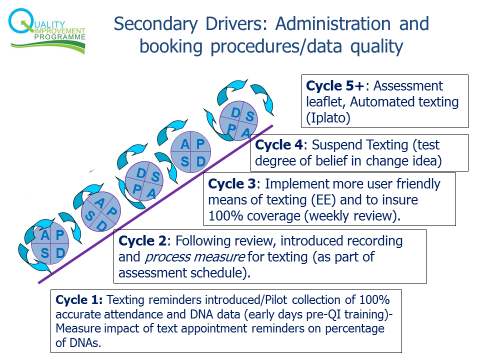
Psychotherapy services improve access for service users…
11th July 2017
All three of the Trust’s Psychotherapy Services have been part of the Improving Access to Services Learning System. They have all been primarily working on improving the wait times and/or non-attendance rates for assessments/first face to face contacts. More recently the services have moved to focus on improving the wait to treatment.
C&H Psychotherapy Service
City and Hackney’s Psychotherapy Service’s QI project has two aims:
- Reduce the length of time from referral to first face to face to less than 8 weeks in the next 6 months
- Reduce the wait time from referral to assessment by 25% in 6 months.
The team’s theory was that the current DNA (Did Not Attend) rates may be related to the long wait for assessments. Therefore the team have been working hard to develop a new intervention that they predict will help reduce the wait time to assessment but also reduce the non-attendance rates. They have introduced and tested information and enrollment sessions. These sessions take place after a referral has been screened but before a formal assessment session. The purpose of the information and enrollment session is to provide service users with information about the service they have been referred into and the type of therapy they offer, they also provide information about crisis and manage expectations around the current wait times. Ten service users are invited to attend a session and at the end of the session service users are booked into available assessment slots.
At the end of the information and enrollment session service users are asked to complete a service user feedback form which asks whether they feel the session was useful and whether they are more likely to attend the next appointment. Since they started testing this change idea over 200 service users have attended the information and enrollment sessions and have then been offered an appointment. 90% of service users have fed back that they found the session useful, they appreciate the information and that it had helped them to understand the waits for assessments. Furthermore, of the first 60 service users to have experienced this new pathway, non-attendance has reduced to less than 15%, which is fantastic!
The team are now working on reducing the wait time for treatment. They are currently redesigning the treatment pathways and planning to introduce psycho-education groups.
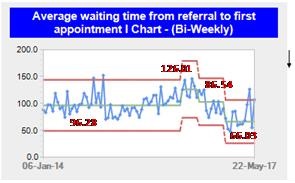
Newham Psychotherapy Service
Newham’s Psychotherapy service has been working on improving their wait times and non-attendance rates for assessments for the past two years. Alongside MSK Physio they were one of the first teams within the learning system to test text message reminders and ran small scale PDSA (Plan Do Study Act) cycles using a manual mobile phone. The introduction of text message reminders resulted in an incredible 49% reduction in first appointment DNAs. The teams fantastic results created the evidence base for text message reminders reducing DNAs, which assisted in ensuring that the automated text message system became available to other services.
In addition to improving the DNAs for assessments, Newham PTS have achieved an 18% reduction in wait times from referral to assessments. They achieved this reduction by testing a variety of change ideas:
- Reducing the number of queues into the service by reducing the number of specialist assessments. Where possible the team would conduct generic rather than specialty specific assessments as this enabled them to be more flexible with capacity.
- The Referrals Coordinator was able to screen referrals to ensure there was adequate information prior to the referrals meeting. This would enable the referrals coordinator to contact the referrer and gather any further information rather than waiting to do this after the referrals meeting. This allowed the team to make an informed decision about a referral.
- Tested a new referral form which helped reduce the amount of inappropriate referrals and be more objective about the screening process.
In addition to the excellent results that the team has seen, this project is a great example of service user and carer involvement. Thana, an Expert by Experience has been working with the team for a number of months as a key member of the project team. He has been assisting the team in thinking about ways in which they can improve their waiting times but also ensure that the service provides a holistic approach to care. The team developed a leaflet which they believed would help reduce DNAs by reducing inappropriate referrals and improving engagement by providing service users with information about the service that they have been referred into. Thana, alongside the Service User and Carer Steering Group reviewed the leaflet and provided feedback to the project team. Thana was also involved in a session where the team brainstormed a potential new pathway design and he describes this in his blog (https://qi.elft.nhs.uk/quality-improvement-qi-what-drives-this/).
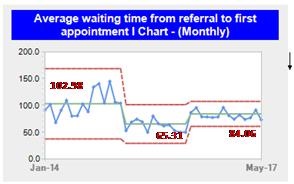
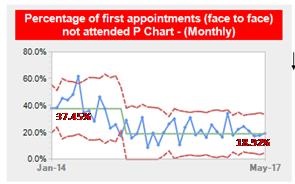
Tower Hamlets Psychotherapy Service
Tower Hamlets Psychotherapy Service has two projects working on improving access to services. The first is focused on improving the length of time from referral to assessment, with the aim to have 100% service users seen within 11 weeks. The team have tested a variety of different change ideas:
- Referral form
- Increasing capacity for assessments
- Call and Book
The call and book change idea was focused on providing service users with the choice of appointments. Previously when the service received a referral the service user would be sent a letter requesting that they get in contact with the service within two weeks. However with the call and book change idea the administrative staff contacted the service user straight away to book them into an assessment appointment. The change ideas tested by the team resulted in an incredible 63% reduction in wait times for assessments. Following the initial testing of the call and book PDSA the team agreed for administrative staff to call the service user a second time if they did not answer the first call.
The team noticed that as the wait time for assessment decreased the number of people on the wait list for treatment increased. Therefore the team started a second QI project focusing on reducing the wait time for treatment with the aim for 95% of service users to be seen within 18 weeks of referral. The team are currently focusing on checking in with service users to see if they are still interested in being on the wait list for treatment.
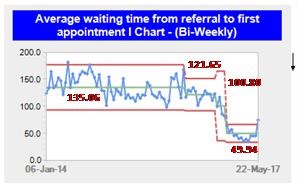
Most Read Stories
-
Why is Quality Control important?
18th July 2018
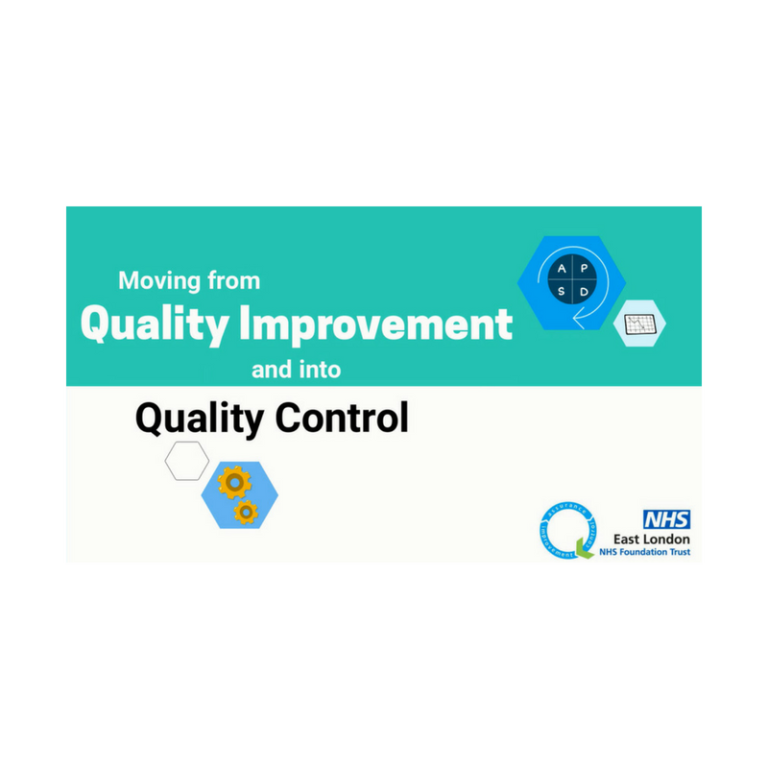
-
An Illustrated Guide to Quality Improvement
20th May 2019
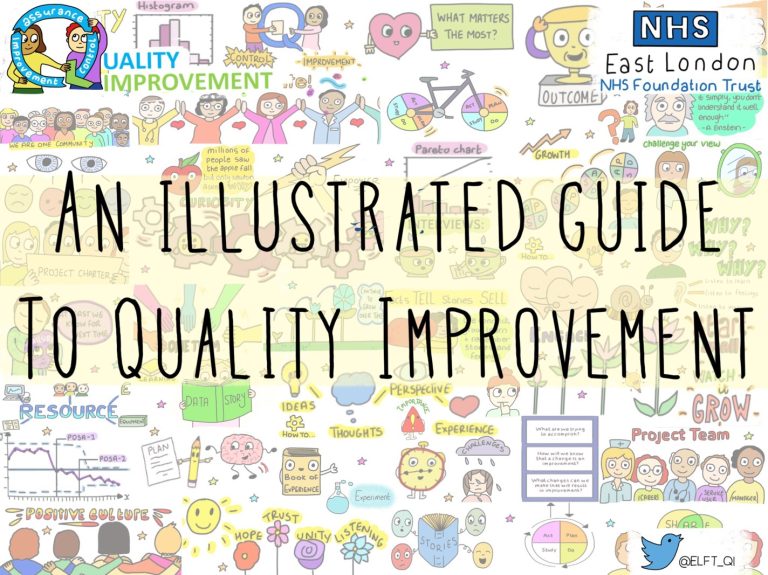
-
2016 QI Conference Poster Presentations
22nd March 2016
-
Recognising Racism: Using QI to Help Take Action
21st January 2021
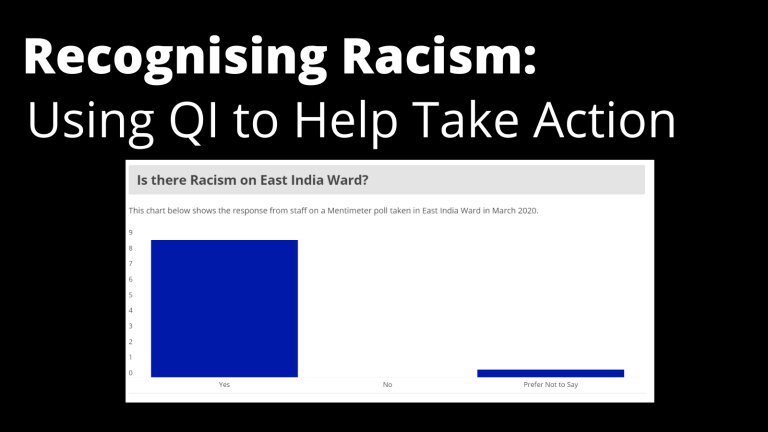
-
Using data enabled us to understand our problem
31st March 2023
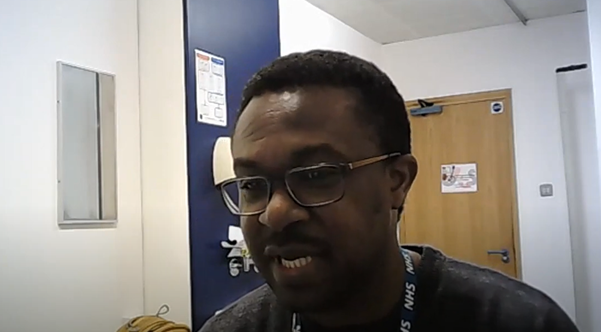
-
QI Essentials: What does a Chief Quality Officer do?
18th March 2019

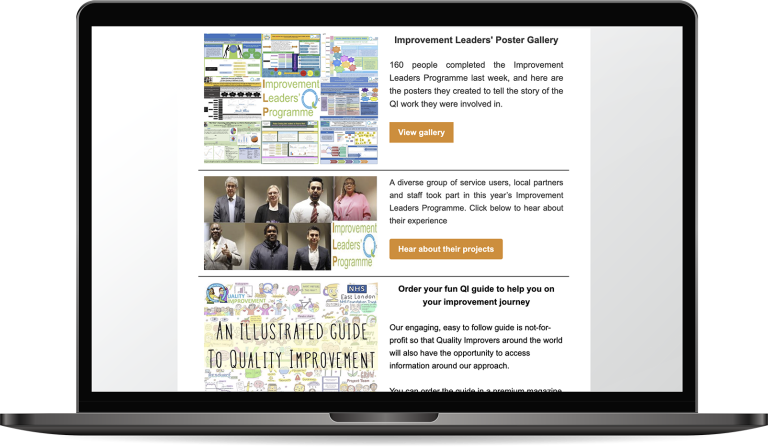
Follow QI on social media
To keep up to date on the latest concerning QI at ELFT, follow us on our socials.



